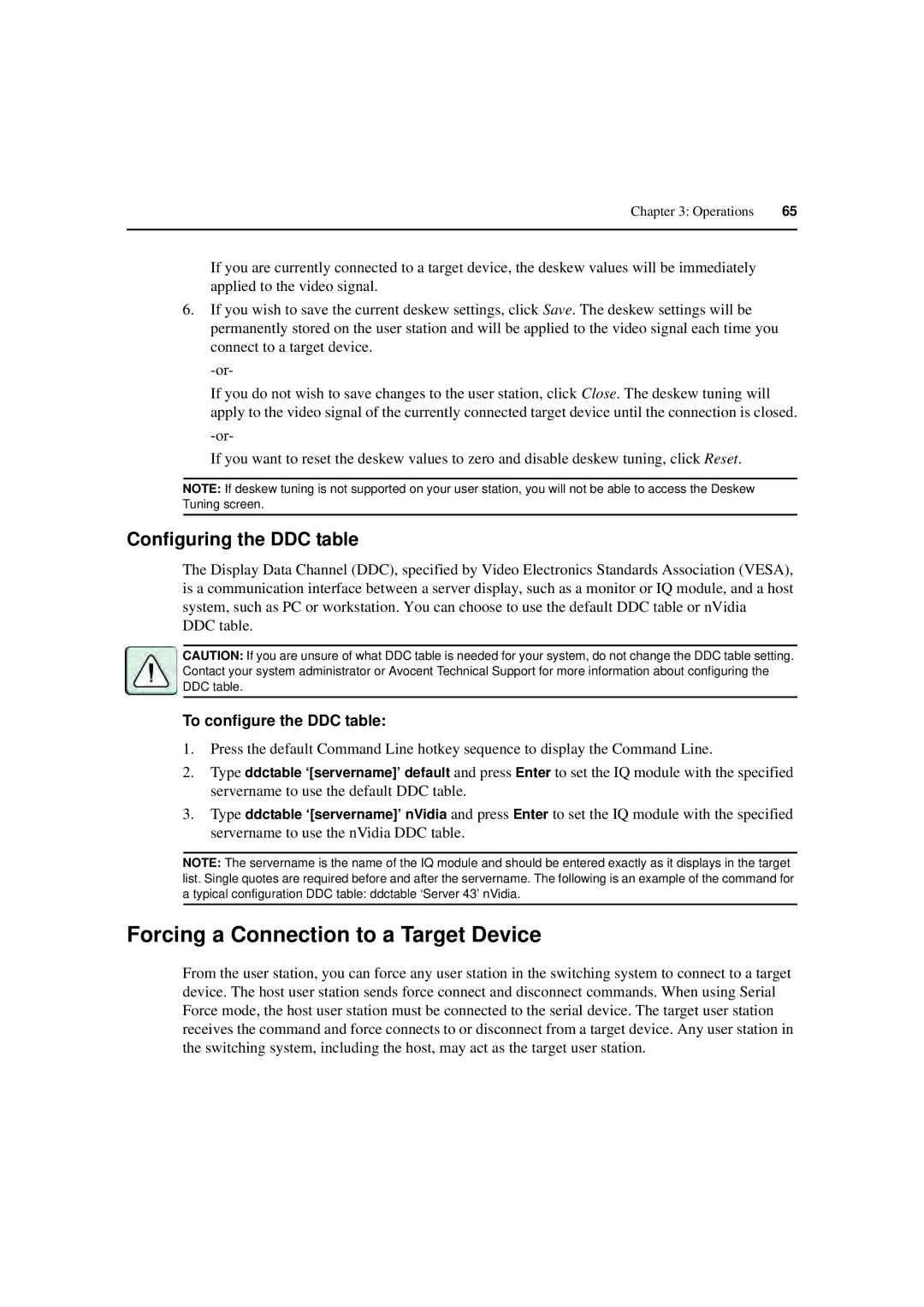
Chapter 3: Operations | 65 |
|
|
If you are currently connected to a target device, the deskew values will be immediately applied to the video signal.
6.If you wish to save the current deskew settings, click Save. The deskew settings will be permanently stored on the user station and will be applied to the video signal each time you connect to a target device.
If you do not wish to save changes to the user station, click Close. The deskew tuning will apply to the video signal of the currently connected target device until the connection is closed.
If you want to reset the deskew values to zero and disable deskew tuning, click Reset.
NOTE: If deskew tuning is not supported on your user station, you will not be able to access the Deskew Tuning screen.
Configuring the DDC table
The Display Data Channel (DDC), specified by Video Electronics Standards Association (VESA), is a communication interface between a server display, such as a monitor or IQ module, and a host system, such as PC or workstation. You can choose to use the default DDC table or nVidia DDC table.
CAUTION: If you are unsure of what DDC table is needed for your system, do not change the DDC table setting. Contact your system administrator or Avocent Technical Support for more information about configuring the DDC table.
To configure the DDC table:
1.Press the default Command Line hotkey sequence to display the Command Line.
2.Type ddctable ‘[servername]’ default and press Enter to set the IQ module with the specified servername to use the default DDC table.
3.Type ddctable ‘[servername]’ nVidia and press Enter to set the IQ module with the specified servername to use the nVidia DDC table.
NOTE: The servername is the name of the IQ module and should be entered exactly as it displays in the target list. Single quotes are required before and after the servername. The following is an example of the command for a typical configuration DDC table: ddctable ‘Server 43’ nVidia.
Forcing a Connection to a Target Device
From the user station, you can force any user station in the switching system to connect to a target device. The host user station sends force connect and disconnect commands. When using Serial Force mode, the host user station must be connected to the serial device. The target user station receives the command and force connects to or disconnect from a target device. Any user station in the switching system, including the host, may act as the target user station.
